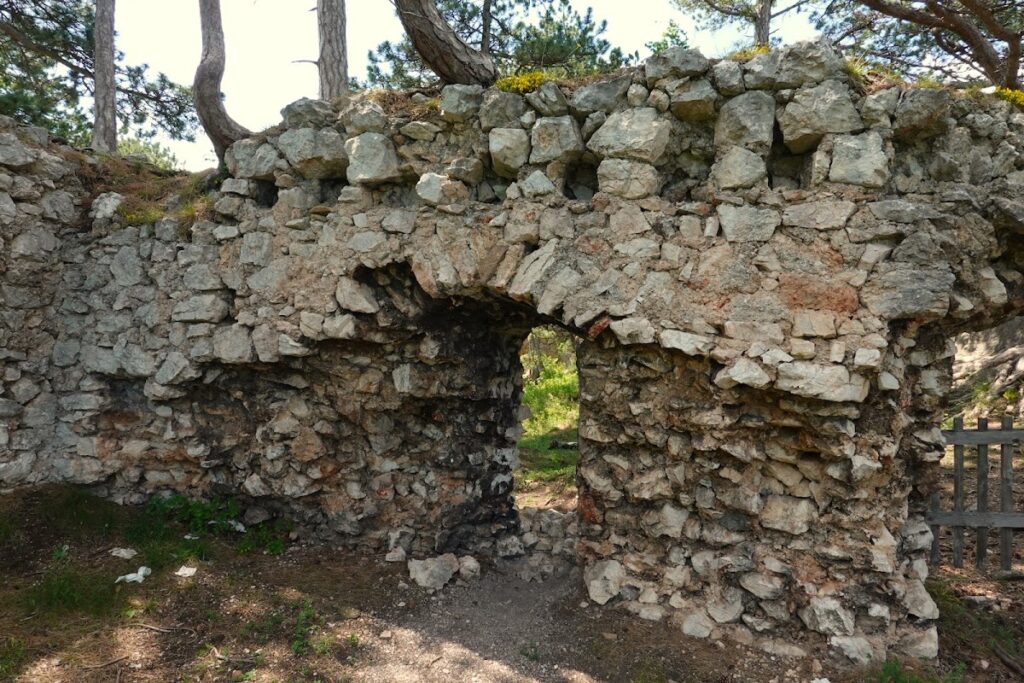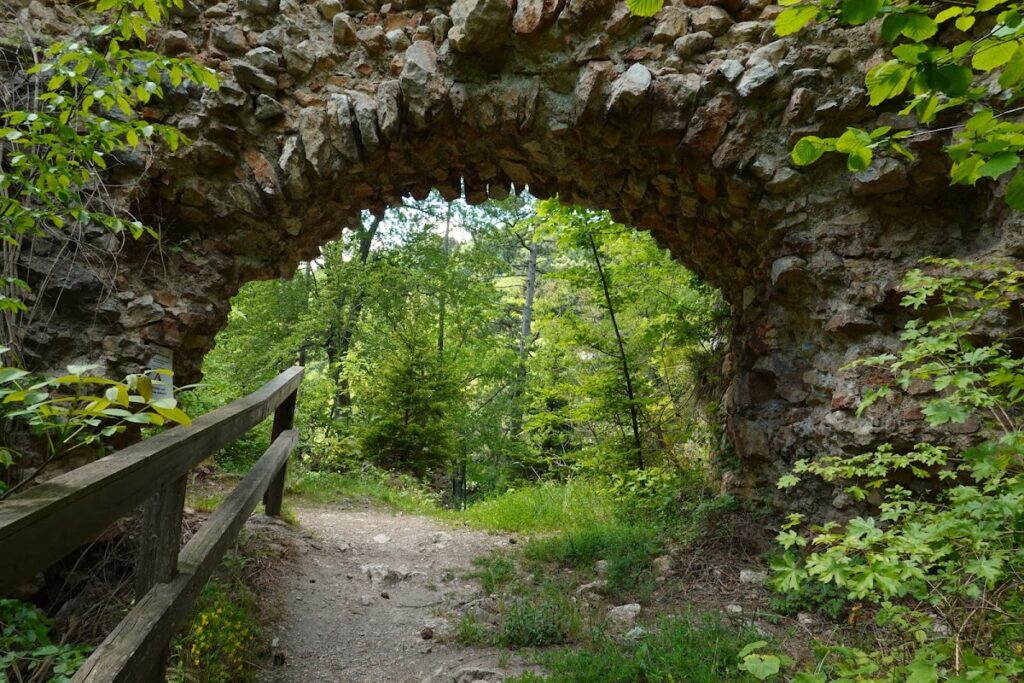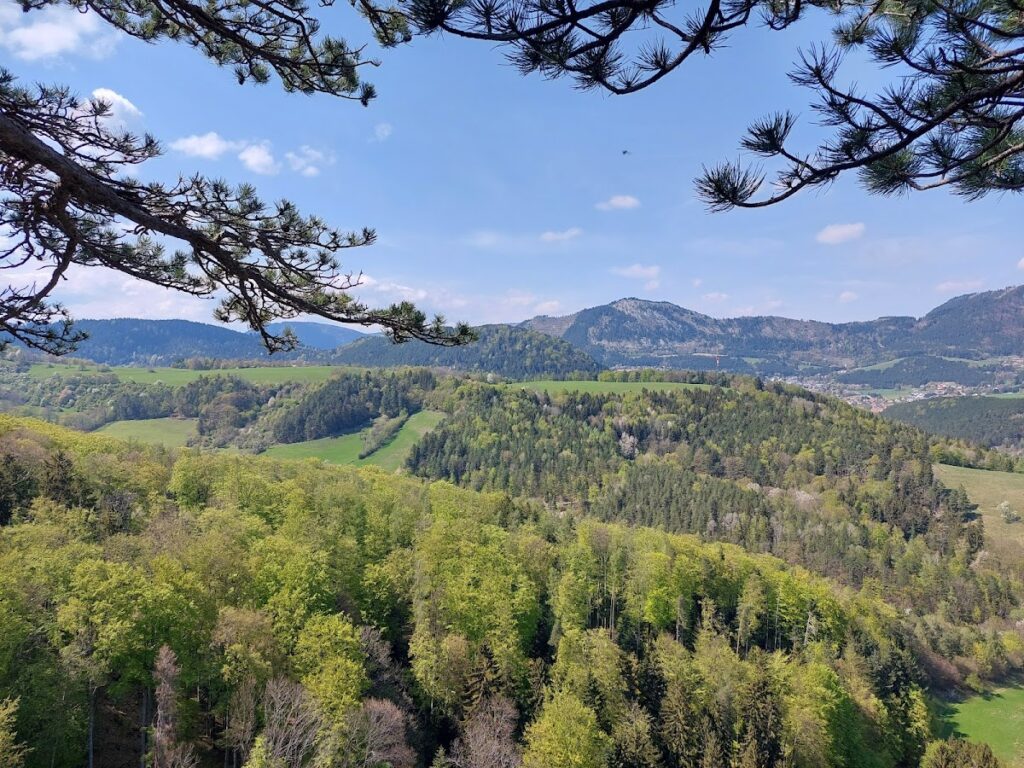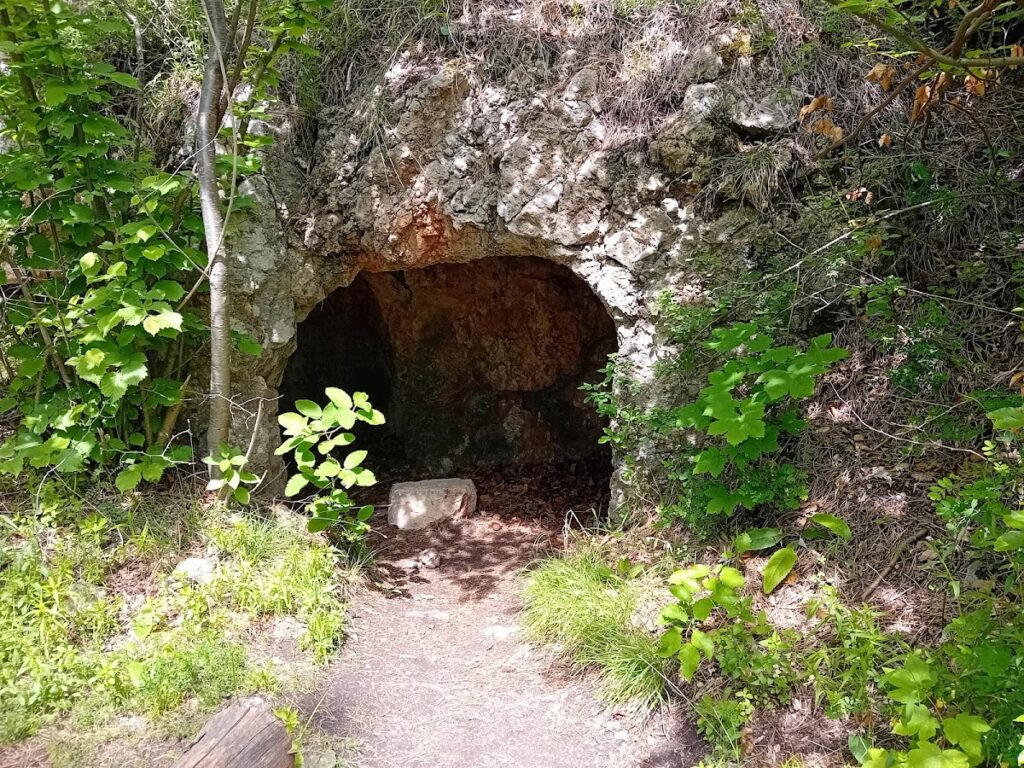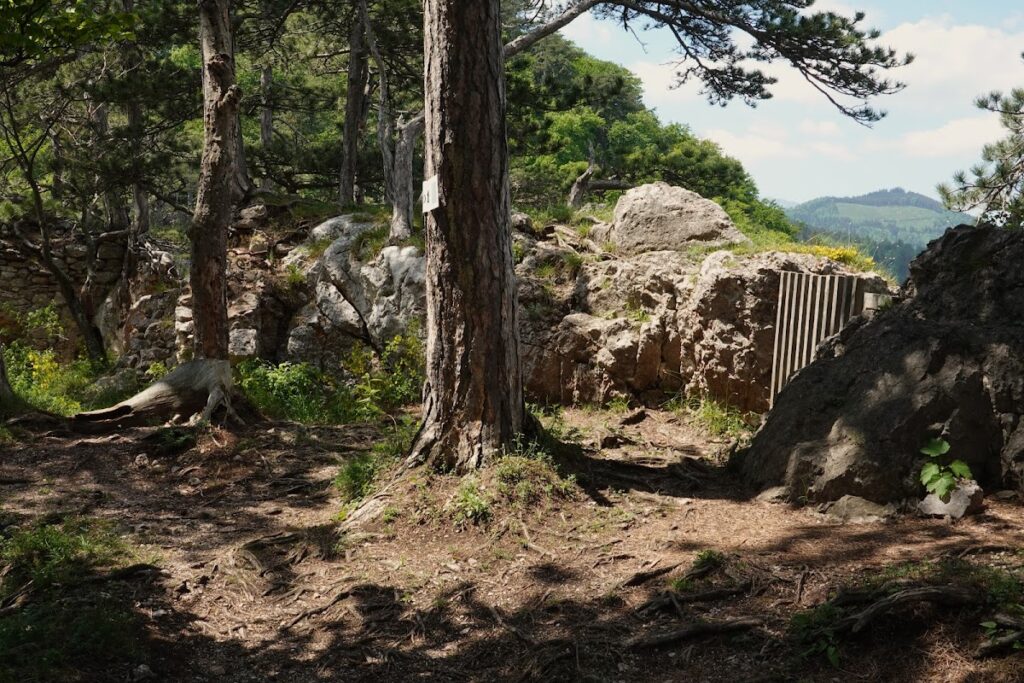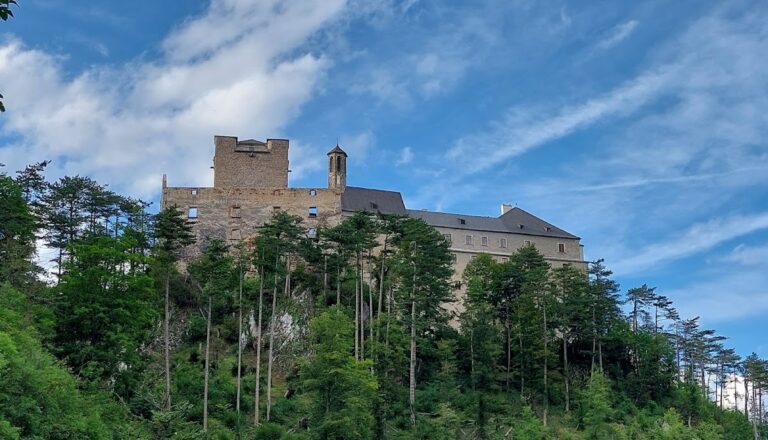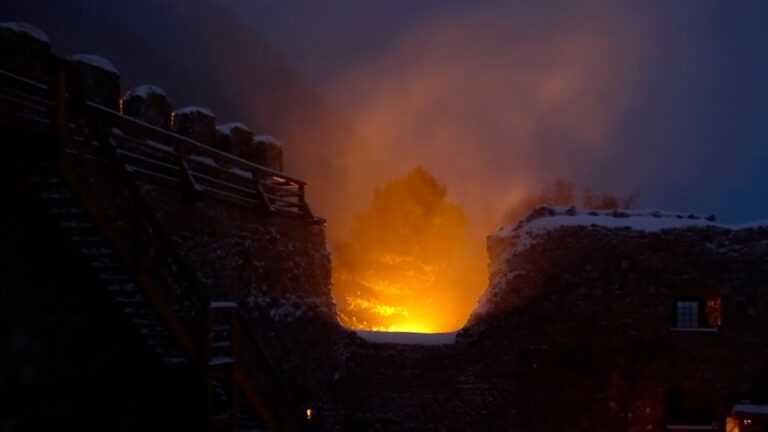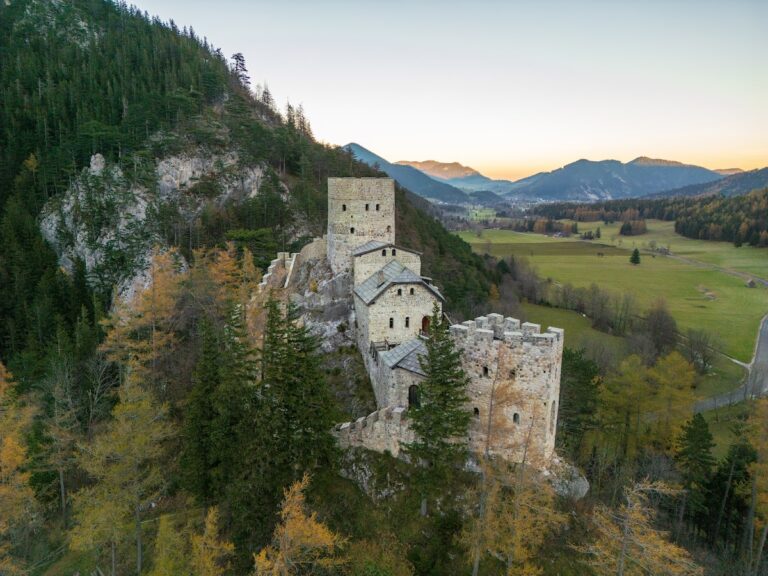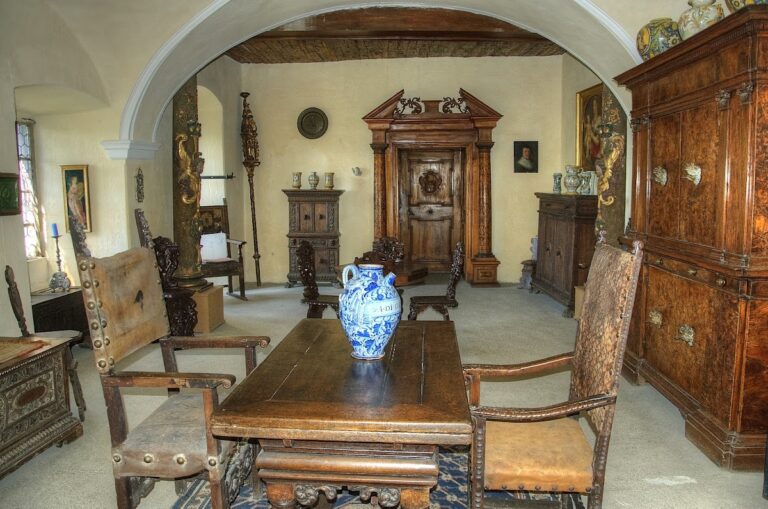Schrattenstein Castle Ruins: A Medieval Fortress in Austria
Visitor Information
Google Rating: 4.5
Popularity: Low
Google Maps: View on Google Maps
Country: Austria
Civilization: Unclassified
Remains: Military
History
Schrattenstein castle ruins are situated in the municipality of Schrattenbach in Austria. This medieval fortress was constructed by local nobility during the High Middle Ages, linked to the lords of Schrattenstein.
The earliest record dates to 1182, when Margrave Ottokar IV of Styria issued a document confirming privileges to the monastery of Seckau. This deed mentions a “Chalhoch de Stratensteine,” believed to identify a member of the Schrattenstein family, who held the castle as their hereditary possession. The family likely became extinct toward the late 1200s, after which ownership transferred to Rudolf I of Habsburg. Rudolf granted the property to Friedrich of Hohenzollern, marking a transition from local lords to influential dynasties.
By the early 1300s, Schrattenstein had become a fief under the rule of the Margraves of Brandenburg or the Burgraves of Nuremberg. These overlords entrusted the castle to the lords of Hauenfeld, relatives of theirs. Around 1364 and 1365, two members of the Hauenfeld family, Jörg and Stephan, sold the castle in two halves to Peter von Ebersdorf, the highest chamberlain in Austria, with Count Friedrich of Nuremberg’s approval. During this time, the castle’s administration was managed by burgraves, appointed officials responsible for its oversight.
Significant enhancements occurred in 1416 under the Ebersdorf family, who expanded the main residential building, known as the palas, and strengthened the fortress’s defenses. Subsequently, the castle came into the possession of the Wallseer family. Barbara von Wallsee transferred half of the fortress to her husband, Siegmund von Schaunberg, integrating the site into their holdings.
In 1542, Erasmus von Scherffenberg acquired the castle, but by the time he sold it seventeen years later to Baron Johann Baptist Hoyos in 1559, Schrattenstein was already in ruins. The castle was described as an “ode veste,” meaning an abandoned or desolate fortress. Following its decline, the nearby Stixenstein castle became a sanctuary for local residents. Schrattenstein no longer had strategic importance, particularly during the Turkish wars, as it was no longer functional. The fortress likely sustained damage and was abandoned amid the conflicts with Hungarian forces led by Matthias Corvinus in the 1480s. Archaeological evidence indicates that some habitation continued at the site into the early sixteenth century. An earthquake in 1590 further contributed to the castle’s deterioration.
In 1937, the site, including the ruins and adjacent land, was sold together with Stixenstein Castle to the city of Vienna, which retains ownership today.
Remains
The remains of Schrattenstein castle occupy a prominent rocky spur, naturally defended by steep cliffs rising approximately 100 meters on the west and southwest sides. This elevated position provided a strategic and protective advantage typical of medieval castles built to oversee and control the surrounding landscape.
At the heart of the site are the ruins of the palas, the main residential and representative building within the fortress. This structure was notably heightened and fortified during the early fifteenth century, reflecting the efforts by the Ebersdorf family to strengthen the castle’s living quarters and defenses. Constructed primarily of stone, the palas exhibits the robust masonry characteristic of the period’s fortification techniques, designed to withstand both attacks and the test of time.
The castle’s layout and materials are consistent with medieval fortresses in the region, relying on local stone and a solid construction style. Though much of the structure lies in ruins today, parts have been stabilized to secure the site. Visitors can access the area and observe the surviving walls and foundational remains, which convey the scale and design of the original castle.
Archaeological surface investigations have uncovered evidence that attests to the site’s historical occupation phases, but no specific artifacts such as tools or decorative elements have been documented. The castle’s close proximity to Stixenstein fortress highlights a spatial relationship whereby the latter offered refuge after Schrattenstein’s decline. This nearby stronghold emphasizes the shifting centers of local power and habitation following the abandonment of Schrattenstein.
Overall, the ruins serve as a tangible link to the region’s medieval past, preserving the memory of a fortress that once played a role in the noble networks and territorial politics of southern Austria.
